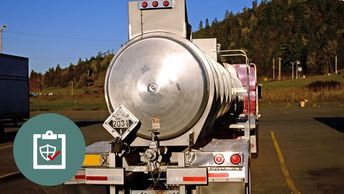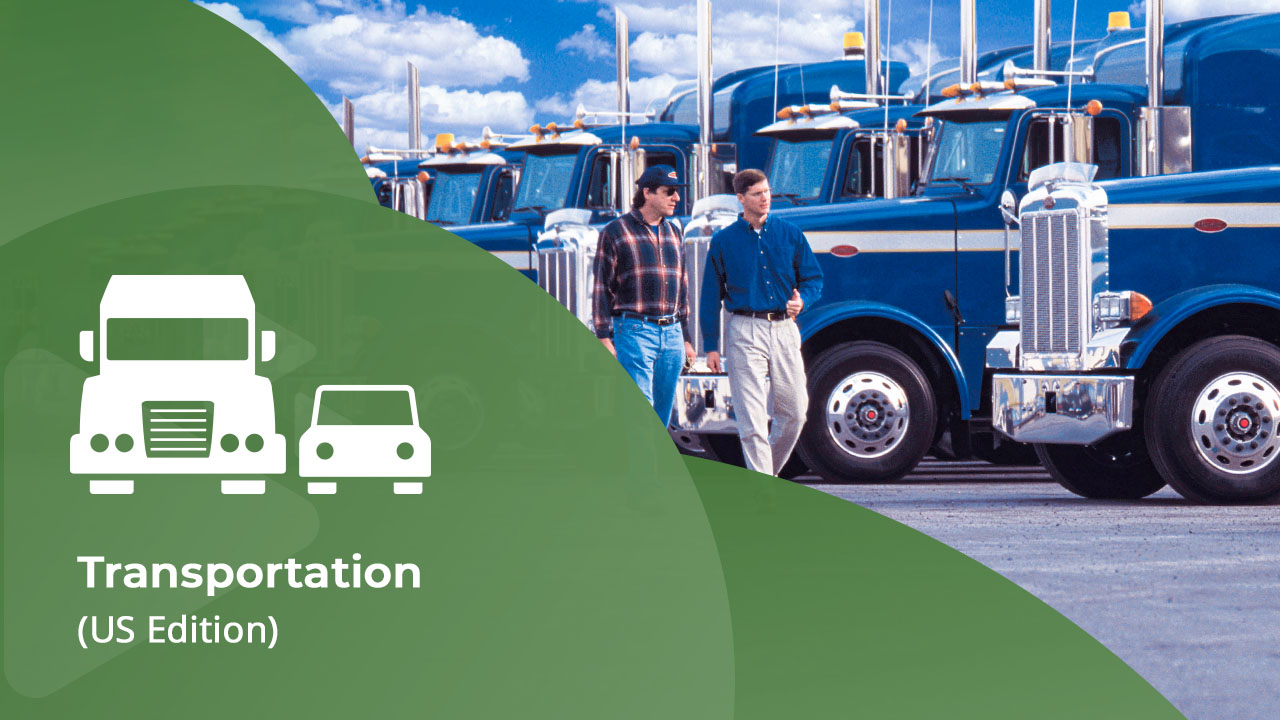DOT: Cross-border Requirements (US and Canada)
- 6 topics | 34m 59s
- Includes Assessment
- Up to 30 languages
- Transcripts
The United States and Canada share the world's largest and most comprehensive trading relationship. Each year, billions of dollars' worth of goods are shipped between the countries, most by road and rail. In 1988, Canada and the US enacted free trade - an economic agreement that supports the trade of goods between countries without tariffs or other trade barriers. Mexico became a partner in 1994 in the broader North American Free Trade Agreement (NAFTA). But although Canada and the US have aligned many trade regulations and standards, each country still has specific requirements for transporting goods across the border, particularly those goods deemed dangerous or hazardous. Prior to taking this course, you should have completed Department of Transportation (DOT) hazardous material transportation training modules 1–4. In this course you will learn about cross-border regulations for shipping dangerous goods across the US-Canada border by road or rail. You'll also cover specific additional requirements for using US regulations when importing into Canada, and Canadian regulations when importing into the US. This course was developed with subject matter support provided by EnSafe Inc., a global professional services company focusing on engineering, environment, health and safety, and information technology. Please note, the course materials and content were current with the laws and regulations at the time of the last expert review, however, they may not reflect the most current legal developments. Nothing herein, or in the course materials, shall be construed as professional advice as to any particular situation with respect to compliance with legal statutes or requirements.
WHAT YOU WILL LEARN
-
identify the two main regulatory Acts that cover the cross-border transportation of dangerous goods by road and rail
-
identify the advantages of complying with Transport Canada and DOT dangerous goods regulations
-
identify which proper shipping names can be used on shipping papers for cross-border shipments
-
identify dangerous goods that require an ERAP to be shipped into Canada
-
recognize TDG-approved safety marks
-
identify when packaging authorized by Canada's TDG regulations may be used for transporting dangerous goods to the United States
-
identify the correct format for a proper shipping description
-
recognize DOT requirements for transporting hazardous waste
-
determine proper package marking requirements for marine pollutants
-
identify when DOT regulations take precedence over TDG regulations
-
identify situations when TDG regulations take precedence over DOT regulations
IN THIS COURSE
-
Dangerous Goods Regulations3m
-
Transport Canada: Shipping Papers7m
-
Transport Canada: Marking, Labeling, and Placarding3m
-
DOT: Packaging Requirements3m
-
DOT: Shipping Paper and Marking Requirements8m
-
Transport Canada and DOT Regulations5m
YOU MIGHT ALSO LIKE
COMPLIANCE-COURSE
DOT: Drug and Alcohol Regulation Awareness for CDL Employees
COMPLIANCE-COURSE
DOT General Awareness
COMPLIANCE-COURSE
DOT: CSA Fundamentals


